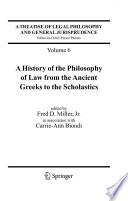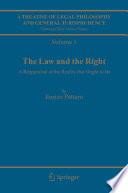
A Treatise of Legal Philosophy and General Jurisprudence
Vol. 6: A History of the Philosophy of Law from the Ancient Greeks to the Scholastics; Vol. 7: The Jurists' Philosophy of Law from Rome to the Seventeenth Century; Vol 8: A History of the Phil. of Law in the Common Law World, 1600-1900.
This comprehensive treatment of legal philosophy and general jurisprudence is designed for jurists as well as legal and practical philosophers. The treatise is presented in two sections: The 5-volume Theoretical part (2005) covers topics of contemporary debate; The 6-volume Historical part (2006-2007) traces the development of legal thought from ancient Greece through the twentieth century. This release incorporates Vol. 6: A History of the Philosophy of Law from the Ancient Greeks to the Scholastics; Vol. 7: The Jurists' Philosophy of Law from Rome to the Seventeenth Century; and Vol 8: A History of the Philosophy of Law in the Common Law World, 1600-1900.
- ISBN 13 : 9781402049507
- ISBN 10 : 1402049501
- Judul : A Treatise of Legal Philosophy and General Jurisprudence
- Sub Judul : Vol. 6: A History of the Philosophy of Law from the Ancient Greeks to the Scholastics; Vol. 7: The Jurists' Philosophy of Law from Rome to the Seventeenth Century; Vol 8: A History of the Phil. of Law in the Common Law World, 1600-1900.
- Pengarang : Michael Lobban, Enrico Pattaro, Michael Lobban, Michael Lobban, Michael Lobban, Michael Lobban,
- Kategori : Law
- Penerbit : Springer Science & Business Media
- Bahasa : en
- Tahun : 2005
- Halaman : 466
- Google Book : http://books.google.co.id/books?id=M9Isbn4791IC&dq=intitle:General+Philosophy&hl=&source=gbs_api
-
Ketersediaan :
The treatise is presented in two sections: The 5-volume Theoretical part (2005) covers topics of contemporary debate; The 6-volume Historical part (2006-2007) traces the development of legal thought from ancient Greece through the twentieth ...









